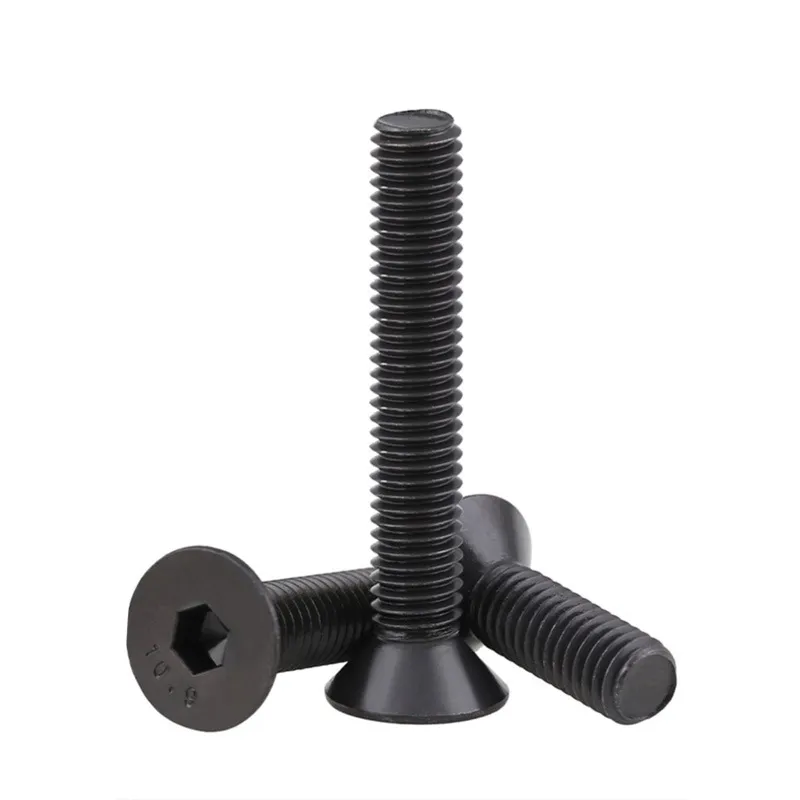

self tapping screw head size
Th12 . 12, 2024 01:56 Back to list
self tapping screw head size
Understanding Self Tapping Screw Head Sizes A Comprehensive Guide
Self-tapping screws are a vital component in various industries and DIY projects, renowned for their capability to create their own hole as they are driven into materials. This feature not only simplifies the installation process but also enhances the fastening capabilities in a range of applications. However, one crucial aspect that often gets overlooked is the head size of these screws. Choosing the right head size is essential for ensuring optimal functionality, aesthetics, and compatibility with different tools.
Types of Self-Tapping Screw Heads
Self-tapping screws come in a variety of head styles, each designed for specific tasks. The most common types of screw heads include
1. Philips Head This is perhaps the most recognized screw head type, featuring a cross shape. It allows for good torque transfer and is less likely to slip when driving.
2. Slotted Head This traditional screw head has a single vertical slot. While it is simple and easy to manufacture, it can be prone to slipping, which might make it less ideal for high-torque applications.
3. Hex Head Also known as a hexagon socket head, this type requires a specific tool (hex key) for installation. It provides excellent torque and is often used in heavy-duty applications.
4. Torx Head This star-shaped design offers superior grip and reduces the risk of cam-out. It’s commonly used in automotive and electronic applications due to its enhanced fastening performance.
6. Flat Head Designed to sit flush with the material surface, the flat head is perfect for projects where aesthetics matter or where space is limited.
self tapping screw head size

Importance of Screw Head Size
The size of a self-tapping screw head plays a pivotal role in its functionality. A larger head size can distribute the load over a broader area, reducing the risk of damage to the material being fastened. Conversely, a smaller head size allows for a more discreet appearance, which can be important in decorative applications.
Selecting the appropriate head size involves considering several factors
- Material Thickness Thicker materials can often accommodate larger screw heads without compromising structural integrity, while thinner materials may require smaller heads to minimize the risk of splitting.
- Load Requirements For applications where screws will bear heavy loads, opting for larger heads can provide added strength and support.
- Tool Compatibility The head size must also match the tools being used. For instance, using a larger hex head screw with a small wrench could lead to stripped screws or damaged tools.
Conclusion
Understanding the intricacies of self-tapping screw head sizes is essential for anyone involved in construction, manufacturing, or DIY projects. By selecting the right type and size, you not only ensure the efficacy of your fasteners but also enhance the overall quality and appearance of your work. Whether you are a professional or a weekend warrior, recognizing the significance of screw head sizes can lead to better project outcomes and a smoother assembly process.
In conclusion, as you delve into your next project, take a moment to consider the appropriate self-tapping screw head size for your needs. A well-informed choice can make all the difference between a successful installation and one that leads to frustration. Happy fastening!
Latest news
-
Similarities and Differences Between Plain Washer and Spring Washer - Fastener Comparison Guide
NewsJun.10,2025
-
Effortless Installation Self-Drilling Window Screws - Fast, Secure, and Durable Fasteners
NewsJun.10,2025
-
Self Drilling Stucco Screws for Fast, Secure Installation Self Tapping & Self-Tapping Fasteners
NewsJun.10,2025
-
Premium Hot Dipped Galvanized Self Tapping Screws - Durable Corrosion Resistance
NewsJun.09,2025
-
Discover M12 Weld Stud Benefits & Applications Guide
NewsJun.09,2025
-
M25 Stainless Steel Washers High-Durability Fasteners for Corrosion Resistance
NewsJun.09,2025

